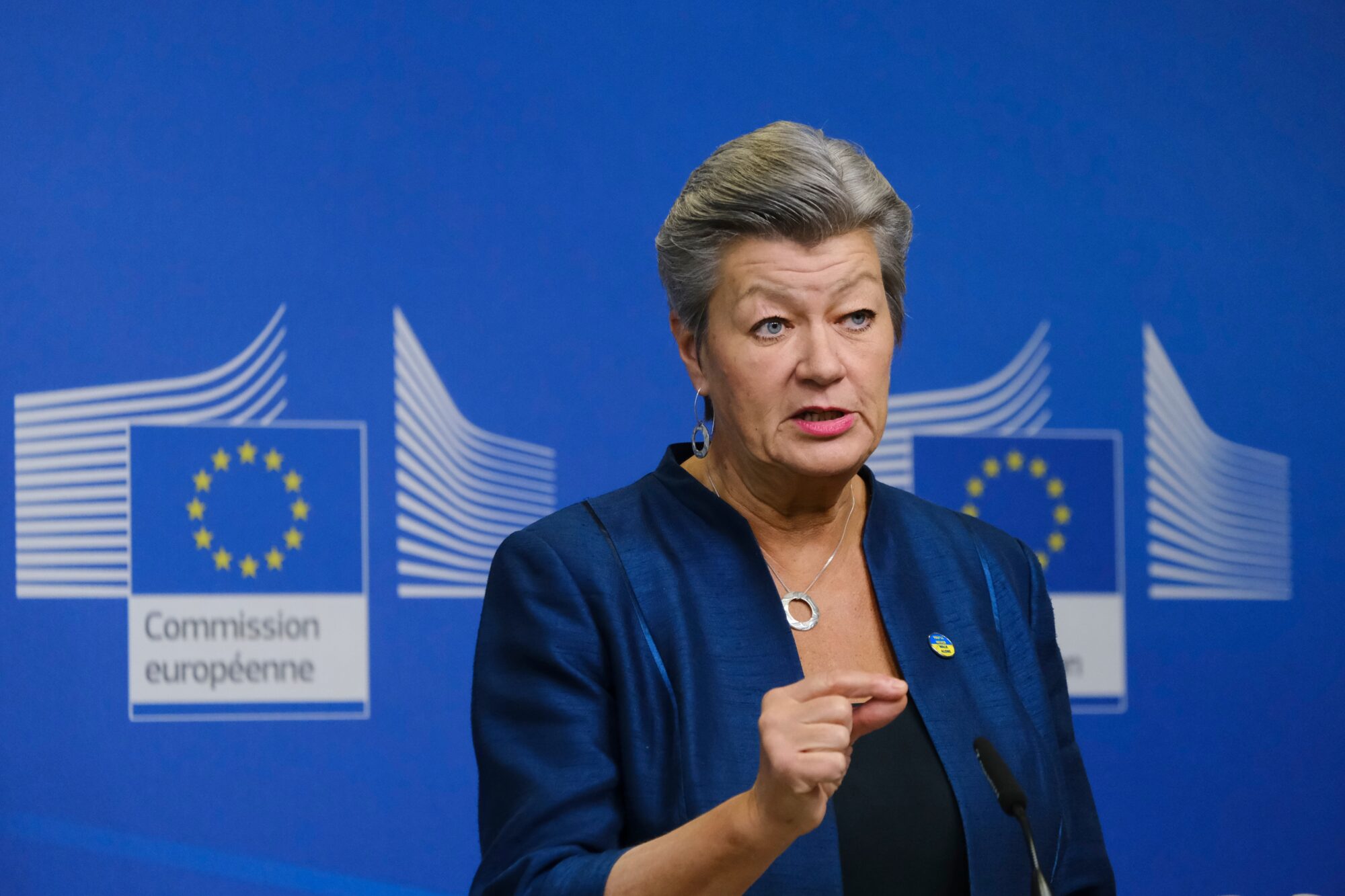
The European Commission on Tuesday, January 24th, presented a plan which aims to accelerate the return of rejected asylum seekers to their country of origin, as the 27-member bloc struggles to grapple with the precipitous uptick in the number of migrants seeking asylum inside its territory—the most recorded since the 2016 crisis.
Under the proposal, presented by EU Home Affairs Commissioner Ylva Johansson (S&D) and EU Returns Coordinator Mari Juritsch, appointed to the recently established position last May, the bloc’s relevant institutions and authorities will allegedly seek to ensure that significantly more migrants residing illegally within the bloc’s territory are repatriated back to their homelands, the Berlin-based newspaper Die Welt reports.
“Those who do not have the right to reside in the European Union must be sent back to their country of origin,” Johansson told journalists at the press conference in Brussels, adding that the number of successful repatriations carried out “needs to be increased.”
Per figures from Eurostat, the statistical office of the European Union, migration authorities in the bloc’s individual member states sought to remove a total of 342,100 people in 2021, the most recent year in which complete data is available. Of that number, a mere 24% were returned to a country outside of the EU.
Johansson, a member of the Swedish Social Democratic Party, told the press that the EU is presently “experiencing an increase in irregular arrivals,” and noted that most who have come—despite having applied for asylum—are not actually in need of international protection.
The commissioner also cited figures released by Frontex, the agency tasked with ensuring the integrity of the European Union’s external borders, days ago, which revealed that over 330,000 irregular arrivals into the bloc were recorded last year, 100,000 more than the previous year, and the highest witnessed since 2016.
The border agency is set to receive supplementary powers to more effectively deal with reparations, Johansson noted.
The strategy paper contains several proposals. In addition to increased cooperation across member states—intended to make the process more efficient—there are plans for migrants to be given professional support during reintegration in their country of origin. The entire process is also set to be digitized.
“Member states can’t solve it alone and the Commission can’t solve it alone either,” Johansson said. One of the primary objectives outlined in the EU’s “strategy for more effective returns”, she continued, is to “ensure that member states join forces and that there is seamless coordination and coherence between all actors to ensure that joint efforts target returns to specific third countries in line with political priorities.”
One EU diplomat has criticized the strategy paper, arguing that it lacks ambition and that it appears “to be more summary of things we’re already doing than… a much-needed path to reboot the migration debate in Europe.”
A report published days ago by the EU Commission, which cited figures from the European Asylum Support Office (EUAA), revealed that the number of asylum applications submitted across the 27 EU countries climbed to 923,911 last year, up from 630,890 the previous year, representing an uptick of 46.5%. Austria recorded the highest percentage increase of the bloc’s 27 member states.
The bloc’s infrastructural ability to cope with the drastic uptick in asylum numbers has been further compounded by the four million Ukrainian refugees presently being hosted across the EU. Reception centers are under enormous pressure, Johansson stressed.
At the next European Council, due to take place in Brussels early next month, migration is set to be one of the top items on the agenda.
